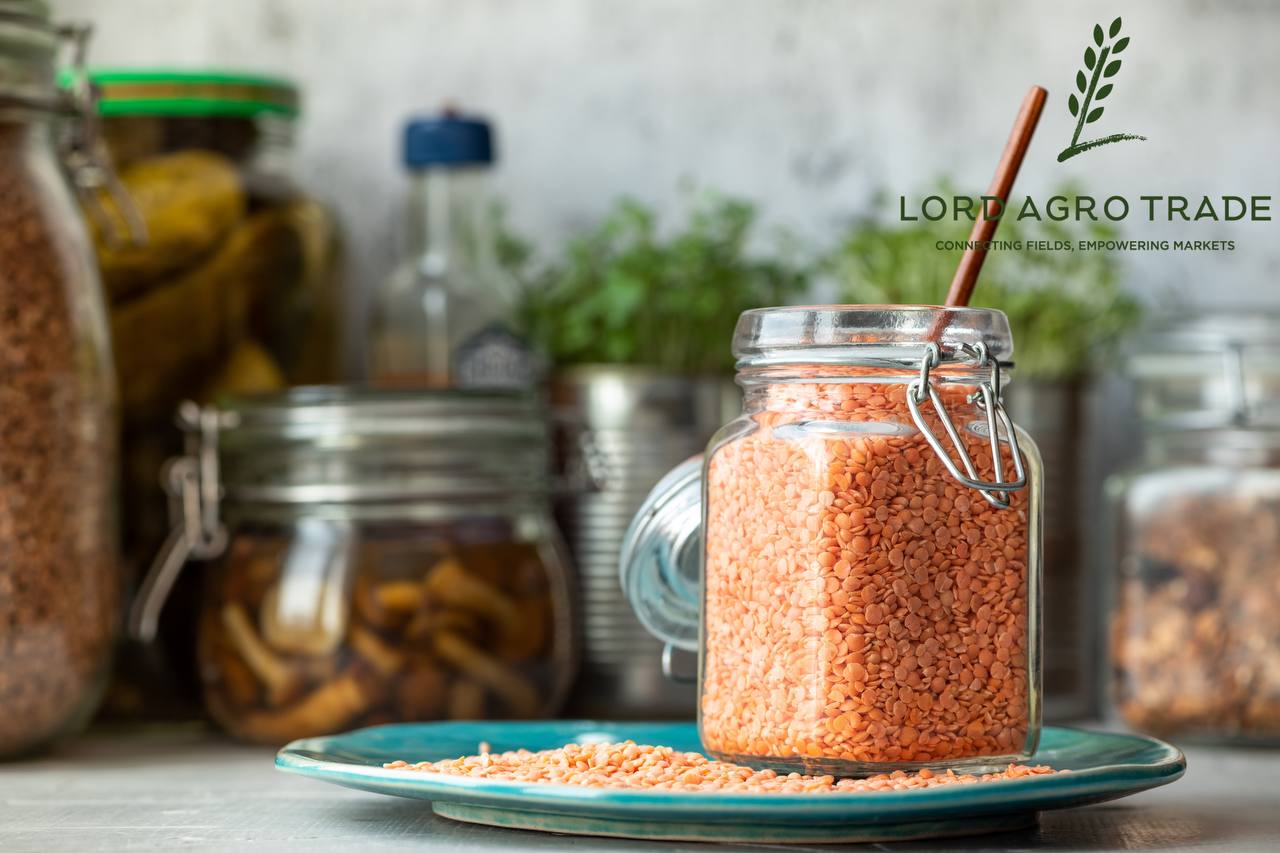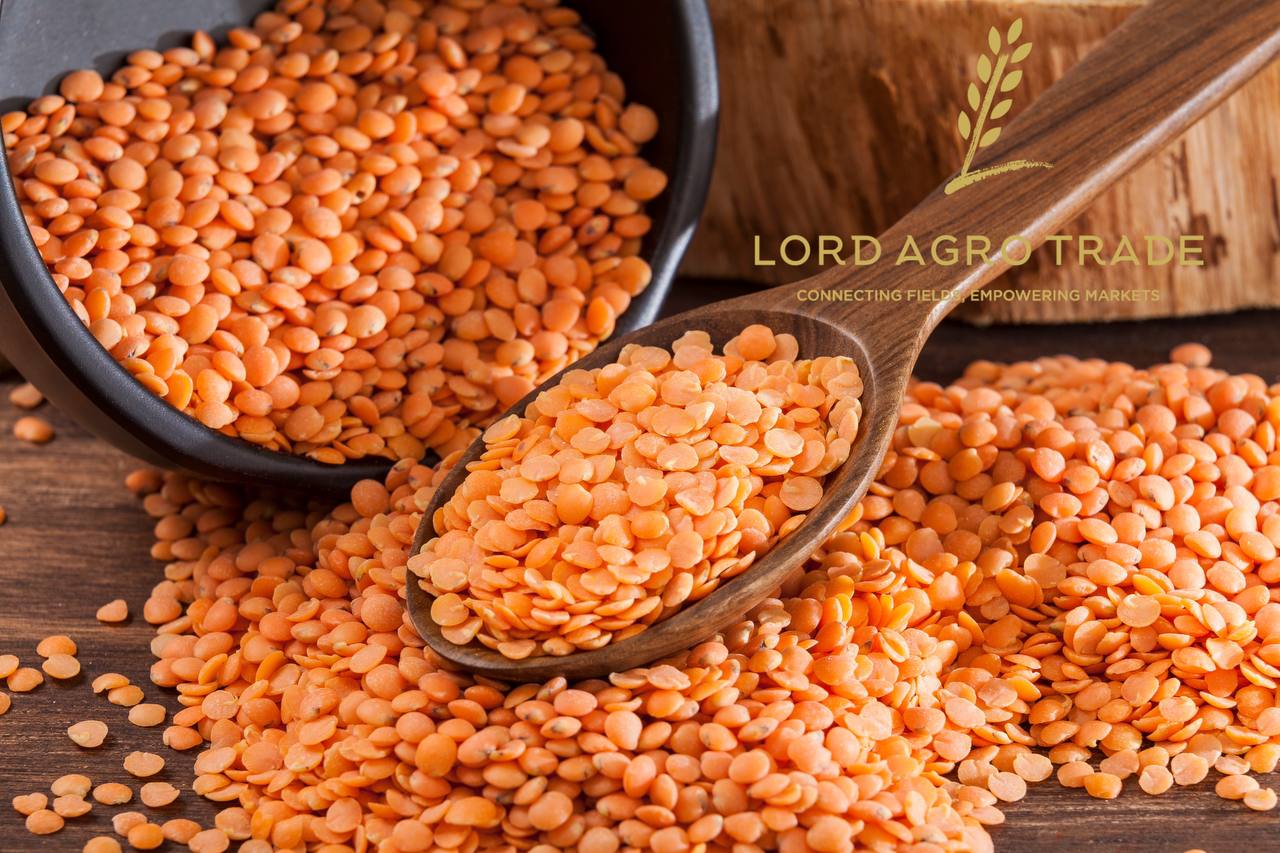Gulfood
17 To 21 FEB 2025 | DUBAI WORLD TRADE CENTRE
We’re excited to see you at Gulfood 2025!
Gulfood
17 To 21 FEB 2025 | DUBAI WORLD TRADE CENTRE
We’re excited to see you at Gulfood 2025!


Red lentils are one of the healthiest and most nutritious legumes. They are famous for their light taste, quick cooking, and high nutritional content, so they are the primary component of many people’s diets. The prime quality parameter of the food is its high red lentil protein content, which makes it a perfect plant-based protein.
Veggies, on the other hand, are the ones reaping the most benefits out of red lentil protein in the market lately – health cause, first and foremost, and secondly, the environmental impact, which should be taken into account. People who want other options than animal protein often turn to red lentil protein as a good and healthy source.
With red lentils in its plant-based protein, they are a great way to supply the body’s protein needs, vegetarians and vegans especially will benefit from this food. Red lentil protein is the one that keeps the muscles in their original state and increases your body’s strength; in addition, fiber and vitamins are also found in this food which they are a complete and healthy diet.
Part of the article will examine red lentil protein. As a result, a resistant yeast of red lentil protein was developed.
Red lentils are one of the plants’ protein riches, which is why they are one of the first choices in the plant-based and vegan diet. The amount of red lentil protein is different depending on whether the lentils are raw or cooked. Generally, 100 grams of red lentils in the raw state contain about 25 grams of protein, while they become 9 grams/100 grams after cooking. The reduction of the protein density is mainly due to the absorption of water during cooking, which adds to the overall weight and accordingly causes the protein to be denser per one unit weight.
Compared to other legumes, red lentil protein is quite substantial, the output of red beans, for instance, is approximately 8.7 grams of protein every 100 grams, and chickpeas are around 19 grams. Green lentils have about 24 grams of protein for 100 grams when raw, the same as red lentils, but Red lentil protein is the most wanted because of its shorter cooking time and the fact that it is generally considered easily digestible.
During the cooking process, some of the protein may be lost; the loss, however, is usually quite slight, about 5 or 10 percent of the overall protein. So, as you can understand, boiled red lentils keep being a good protein source, all the while satisfying the requirements of the general body protein.

Protein is a pillar of health that includes every aspect of bodily functions such as muscle growth, tissue repair, immune system support, and energy production. Intake of red lentil protein can make a significant difference in the muscle strength and tissue health of the person. This protein provides necessary amino acids to the body, which are used for muscle building and recovery following an exercise or physical injury. Also, red lentil protein preserves and enhances general body function, giving energy to the body and making it more resistant to diseases.
One of the other benefits of this red lentil protein is its positive effect on vegetarians and vegans. These are the people who sometimes have difficulty getting their protein requirements, but the lentils, due to being a red lentil protein source, can easily be compliant. Furthermore, red lentils are rich in protein and a source of iron, which is one of those that are the best for vegetarians to avoid iron deficiency, which is always a matter of concern to vegetarians following a vegan diet. The iron found in red lentils is non-heme, and it is more easily taken by the body, particularly when taken with vitamin C sources.
Red lentils are chockful of the mighty fiber component. A diet abundant in fiber is a safe bet to better digestion and lower the chances of constipation. Additionally, fiber is helpful in that it decreases cholesterol, anticontrols blood sugar levels, and maintains heart health. Red lentils especially, because of the high content of fiber, promote good heart health and are one of the preventives for type 2 diabetes. Besides protein, Red lentils also contain essential vitamins such as vitamin B6, folate, and vitamin A. Vitamin B6 has a specific function in protein synthesis and also in the brain, whereas folate plays a major role in the production of cells and heart health.
Vitamin A is a crucial nutrient in the human body since it ensures the health of the eyes, skin, and immune system. By blending the whole set of nutrients including red lentil protein, fiber, iron, and vitamins, red lentils facilitate to the point that it becomes a one-stop nutrition center that can replenish most of the body’s nutrition. Being nutrient-dense and well-formulated makes them the first choice for people who are plant-based or on a budget seeking protein sources that are both healthy and economical.
Red lentils are a really great food. Red lentil protein, as well as the rest of the nutrients included in it, is a fantastic option for different diets. This vegetable is so versatile that it can be easily consumed in various diet plans, whether you are a direct follower of a keto, vegan, or vegetarian diet owing to the multitude of benefits it’s got.
In ketogenic diets which are normally low in carbohydrates and high in healthy fats, the lentils can be used as a high protein and fiber vegetarian meal. Red lentils however contain carbohydrates as well; therefore they should only be consumed in small amounts so the carbohydrate intake would stay within the limits of an individual’s acceptable carbohydrate intake. In fact, this is the case, for which their lentils can be included in smaller meals or they can be used as a support in recipes.

For people mainly a follower of a vegan or a vegetarian diet, Red lentil protein stands out from others and is the protein replacement for meals easily. Red lentils are the main sources of protein, iron, and other essential nutrients for vegan and vegetarian members. They help people in such a way as they are looking for a natural protein source for muscle growth or generally healthy living.
Red lentil protein is a fantastic choice for active individuals and athletes. It is a product with high protein and low fat which is the reason for its choice. Red lentils can enhance muscle repair and sports performance when taken after workouts. Moreover, they are high in fiber which can help control the blood sugar level in the body leading to weight management. These are the essential qualities that make Red lentil protein not only a valuable but also a healthy source of protein for fitness and bodybuilding diet.
On the whole, Red lentil protein, an efficient combo of protein, fiber, iron, and vitamins, can be absorbed into diets easily and successfully accompany different dietary plans and thus meet an individual’s dietary requirements.
Suggested article : Soup with red lentils + Recipes, Tips for the Best Red Lentil Soup
It emerged as one of the most efficient ways of preserving the red lentil proteins and other nutrients that the way in which they are cooked is of great importance. In fact, some of the cooking methods are that the food is cooked in such a way that it will remain the same in both protein and 2 of the three other main nutrients.
Red Lentil Soup: Red lentil soup is a great choice to have Red lentil protein in a diet. To make this soup, boil together red lentils and vegetables like carrots, potatoes, and onions and add spices to your taste. This soup is not only protein-rich but also high in fiber and vitamins.
Red Lentil Salad: Red lentil salad is a light and nutritious combination of protein and fiber. Mix cooked red lentils with fresh vegetables such as tomatoes, cucumbers, and sliced onions, and sprinkle some olive oil with lemon
Red Lentil Stew: Red lentil stews, either meat or vegetarian versions, are fabulous dishes. By using red lentils, tomatoes, onions, and your secret ingredients, you can create a protein-rich stew that can easily feed a family
Red Lentil Burger: One of the sustainable and plant-based Mediterranean-inspired classics is a lentil burger. Just grind the cooked lentils down with some lightly processed vegetables, chickpea flour, and spices. Form the mix into patties and fry them
One can get the full extent of the benefits of Red lentil protein if the methods and ideas of cooking meals are used.
Conclusion
To sum up, Red lentil protein is an extremely valuable and adaptable nutrient that takes care of a vital role in a well-balanced diet. Red lentils contain a lot of protein in addition to other necessary nutrients like fiber, iron, and vitamins, so they are a perfect food for all the different dietary plans. It does not matter whether you are a vegan, vegetarian, sportsperson, or you just want to be fit and healthy, you can wager that red lentils are a very cheap vegan source of protein which is plant-based and also supports your muscle growth, tissue repair, and overall health.
By infusing reddish lentils into your food, you certainly step into an easy and cost-effective path towards your protein therapy, not to mention that you can also improve your overall digestive system. Therefore, try considering Red lentils in your diet and get to enjoy a great range of health benefits that come with this nutritious legume.